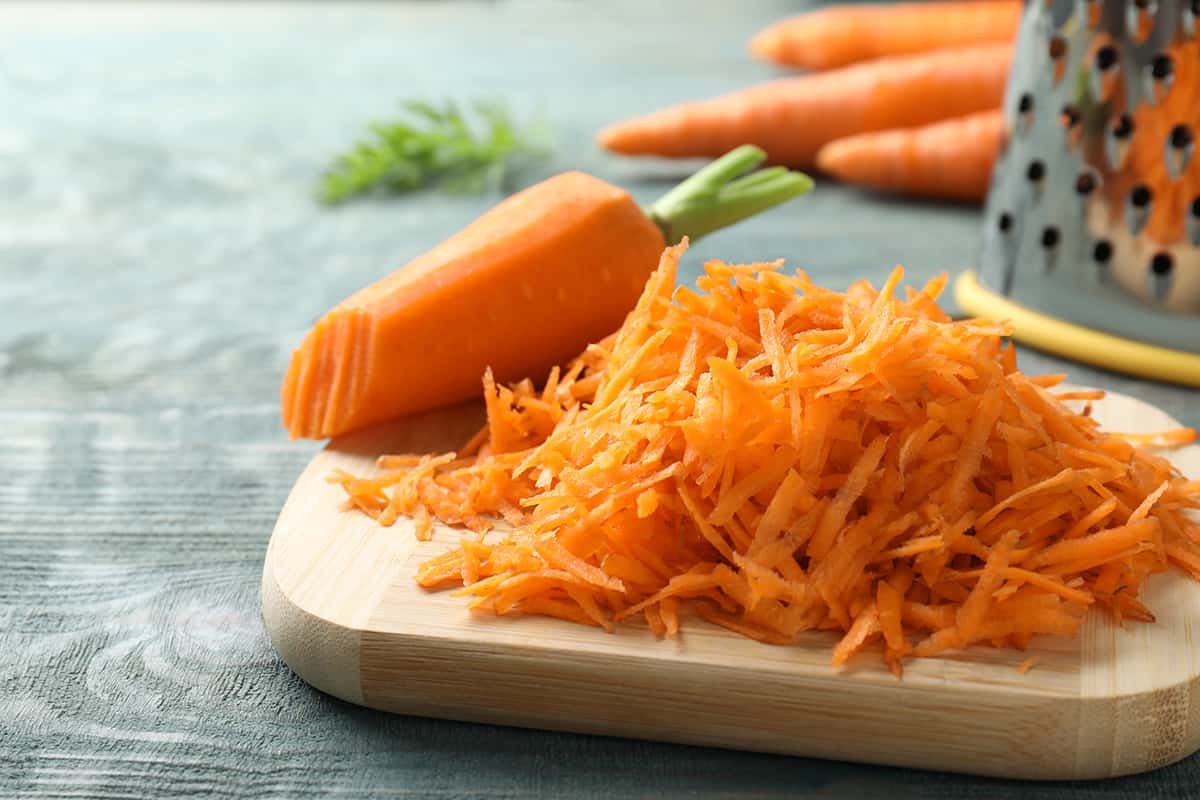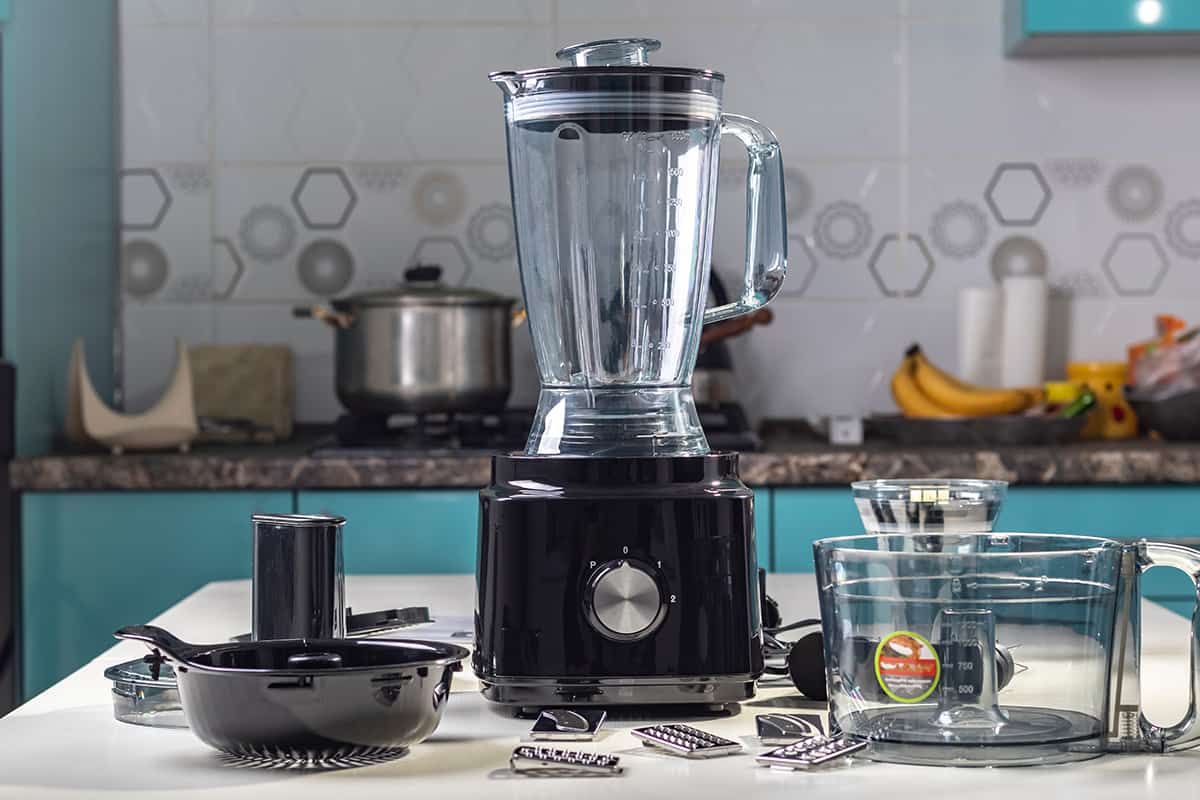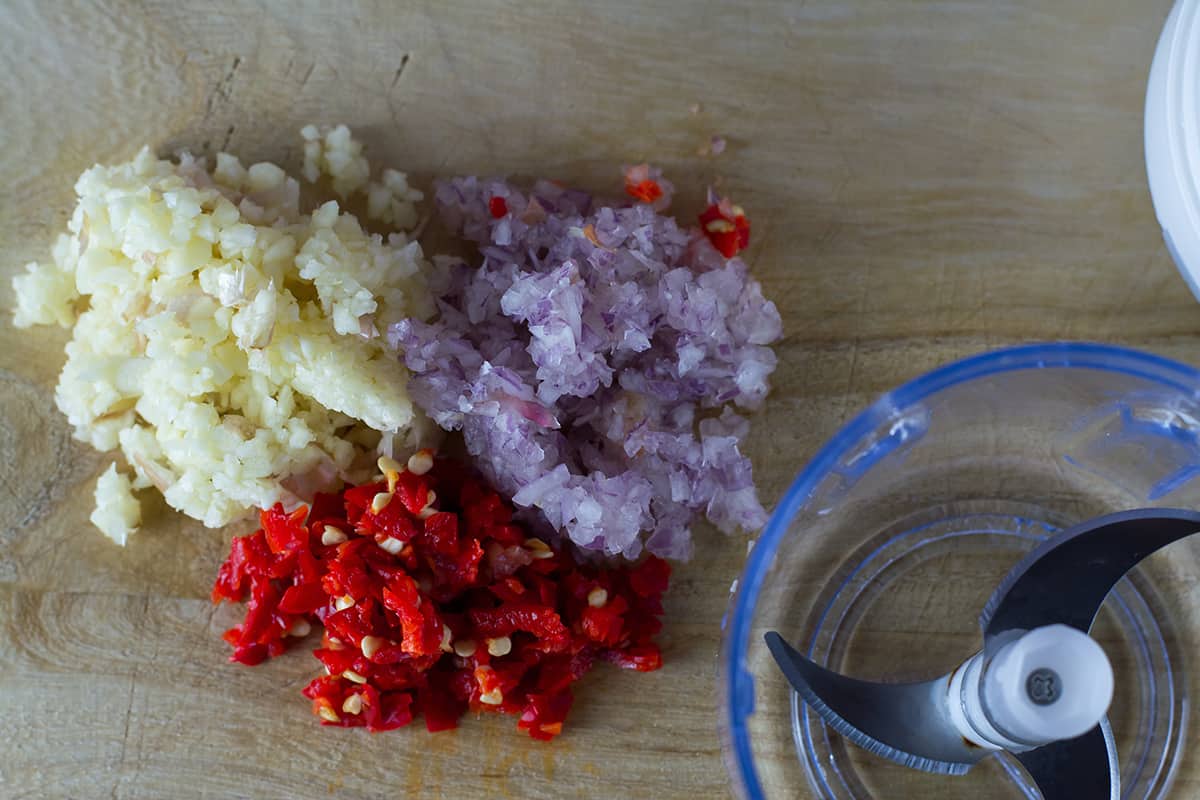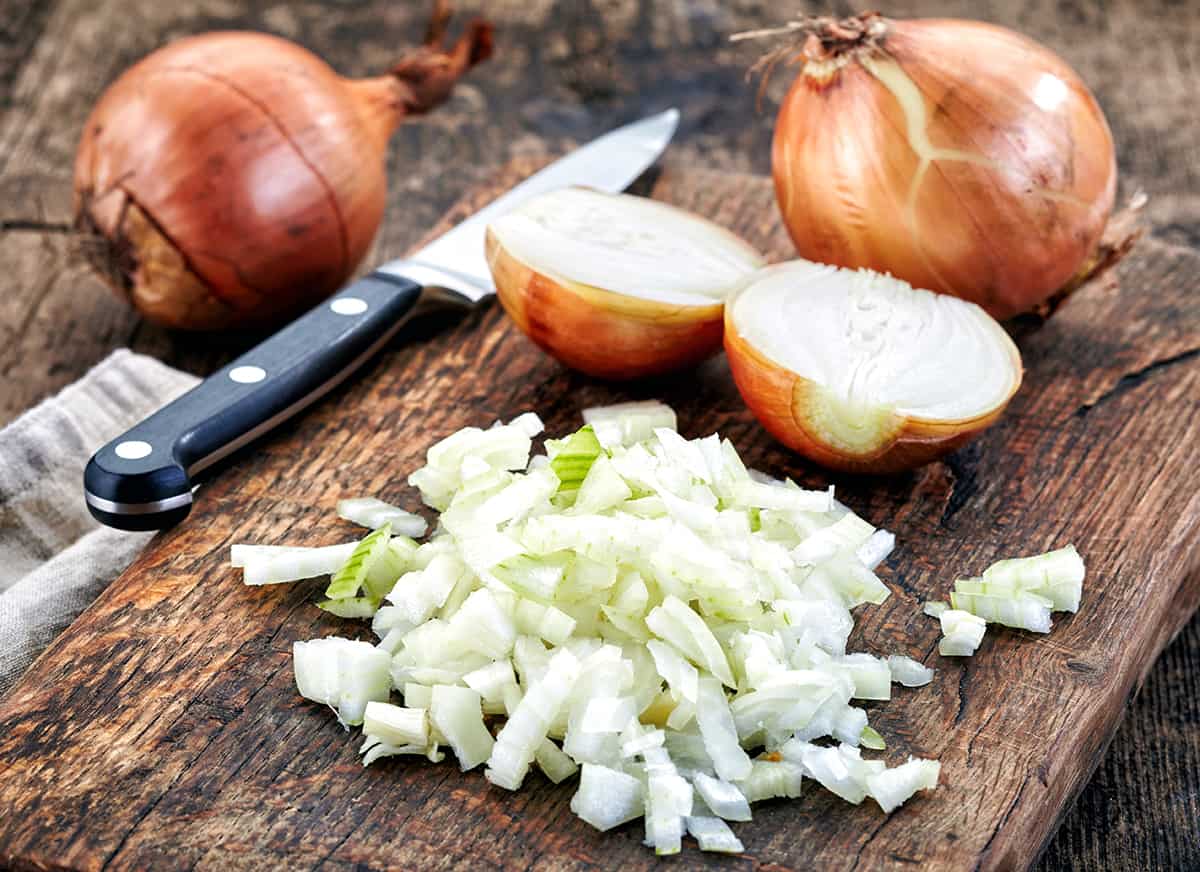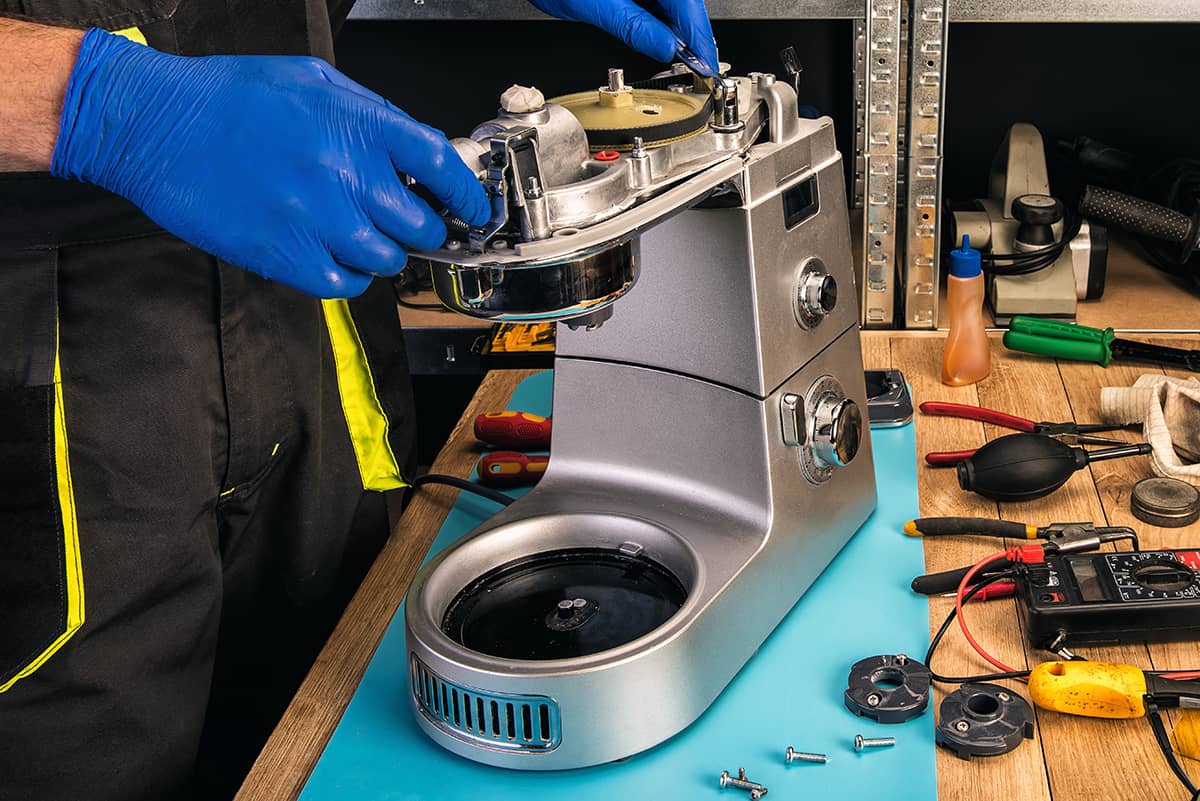With a food processor, you can shred and grate all sorts of vegetables, including hard carrots, with a push of a button. But what if you don’t have a food processor? Luckily, you can still grate carrots without it.
There are all sorts of kitchen tools you can use in place of a food processor to grate carrots, including box graters, mandolin cutters, knives, blenders, and julienne peelers. However, the shape and size of the carrot shreds might not be as uniform as they would be with a food processor.
In today’s guide, I’ll explain the various tools you can use to grate carrots. I’ll also explain how to prepare freshly grated carrots for long-term storage in your fridge or freezer.
How to Grate Carrots Without a Food Processor
For many of us, food processors are the go-to appliance for cutting, grating, shredding, and slicing vegetables. After all, with a press of a button, you can break down large vegetables, including sweet potatoes and carrots, with very little manual labor.
But what if you don’t have a food processor? What if you’re still contemplating whether a food processor is worth the investment or not? If that’s the case, I have good news for you: you can use an array of different tools to grate carrots. In fact, food processors came into the picture much later than many of the alternative kitchen tools for grating carrots.
Below, I’ll talk about the various tools you can use in place of a food processor to grate carrots and nearly any type of vegetable you can imagine. I’ll explain how to use the tools to grate carrots.
Box Grater
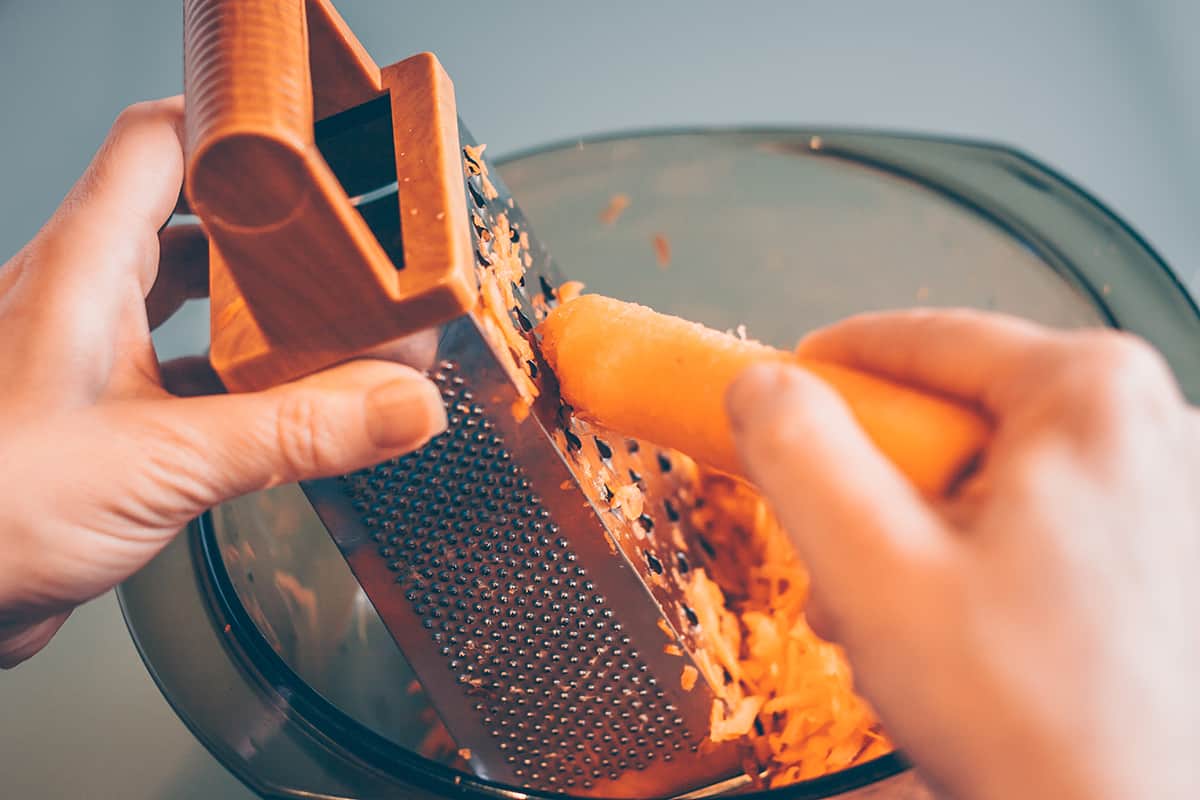
A box grater is a classic tool used for grating vegetables, fruits, and cheese. It comes with at least four sides with different blade designs to produce four distinct cut styles. However, if you want to grate carrots, you should use the standard grating side or the fine grating side.
How to Use a Box Grater
- Peel the carrots using a vegetable peeler. Save the peel for making organic compost!
- Place the box grater on top of a flat-bottom dish or a cutting board.
- Hold the box grater with one hand, and hold the carrot in your other hand with the stem side facing your palm.
- Swiftly but carefully slide the carrot up and down along the box grater’s grate or fine-grate side.
- Discard the final one inch or so of the carrot. If you try to grater any further, you might accidentally cut your hand or finger.
There are handheld graters that have only one grating side. They can be safer to use than box graters, but for hard vegetables like carrots, the ideal grater style is the box grater.
Mandoline Cutter
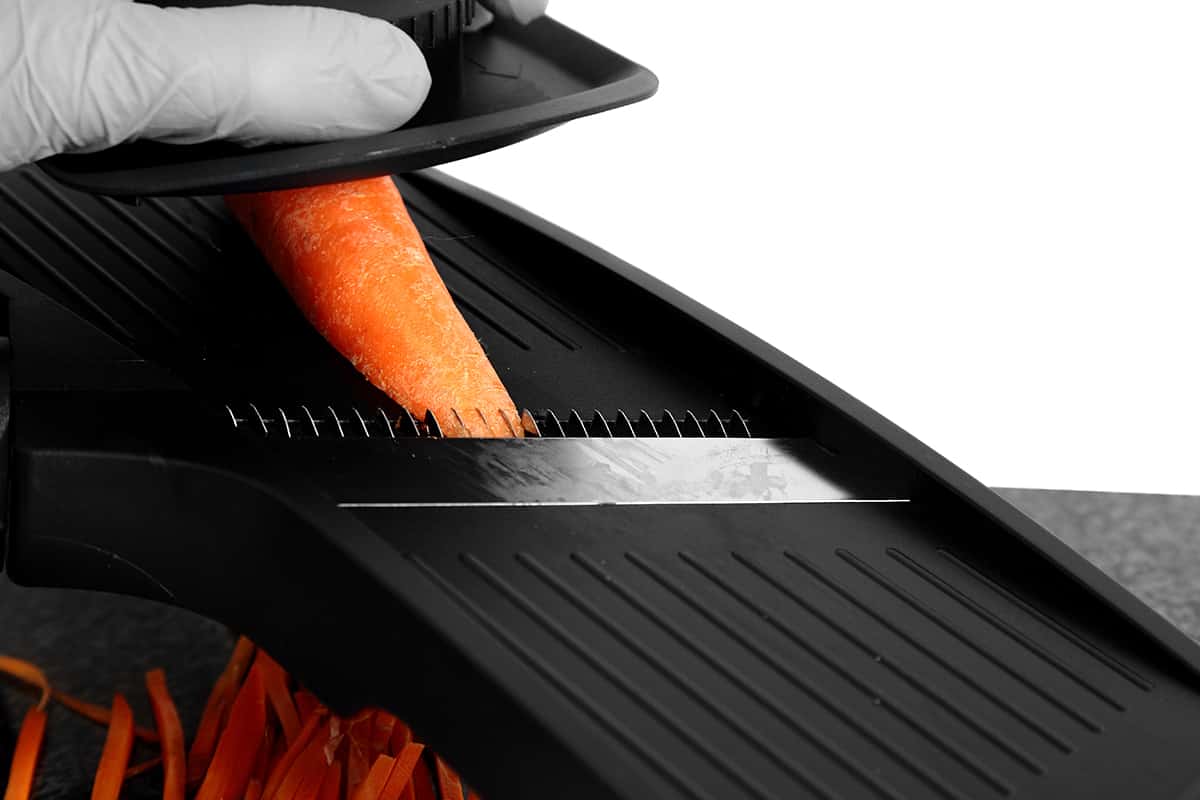
A mandoline cutter consists of three components—a blade, a flat surface, and a guard. It can come with an assortment of blade attachments to cut vegetables in different styles. Just like box graters, mandoline cutters or slicers can be incredibly dangerous, which is why you should utilize the guard whenever you use the mandoline cutter, regardless of how experienced you are in the kitchen.
How to Use a Mandoline Cutter
- Peel the carrot using a vegetable peeler.
- Stick the guard’s prongs into the side of the carrot.
- Attach the blade accessory you want onto the mandoline cutter’s base (flat surface).
- Swiftly but carefully slide the carrot (with the guard) along the flat surface and over the blade.
- Detach the carrot from the guard when it becomes too small to grate on the flat surface.
The great thing about mandoline cutters is that they are incredibly fast for a manual kitchen tool. However, because of the guard, you might have to discard more of the carrot than you would when using a box grater.
Knife
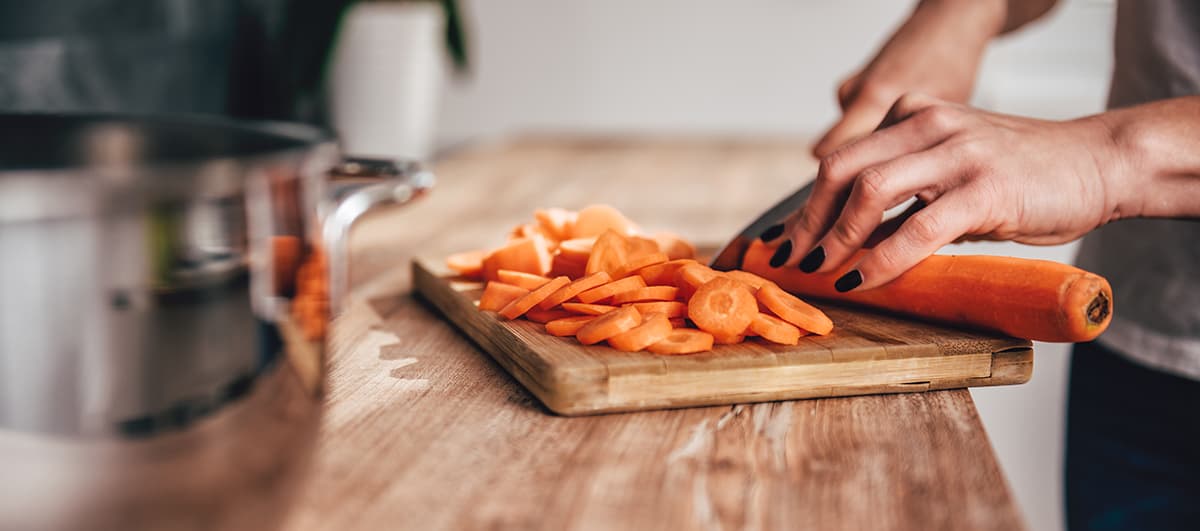
A knife is a classic tool for shredding vegetables. Since you have full control over the knife, you can decide how thick or thin to cut the carrots, whether or not you want the shreds to have angled tips, etc. Make sure you have a high-quality chef’s knife with a super-sharp edge.
How to Use a Knife
- Peel the carrot using a vegetable peeler.
- Cut the carrot into one or two-inch chunks.
- Slice a tiny section from the side of each carrot chunk to create a flat, stable base for the carrot.
- Carefully slice the carrot chunks lengthwise.
- Separate the tinier chunks from each other and flip them on their side.
- Continue slicing the chunks lengthwise.
This method of cutting is known as julienning. You can break down the carrot chunks further by turning them 90° and continuing to slice them. The more slices you perform, the tinier and finer the carrot chunks become.
Blender
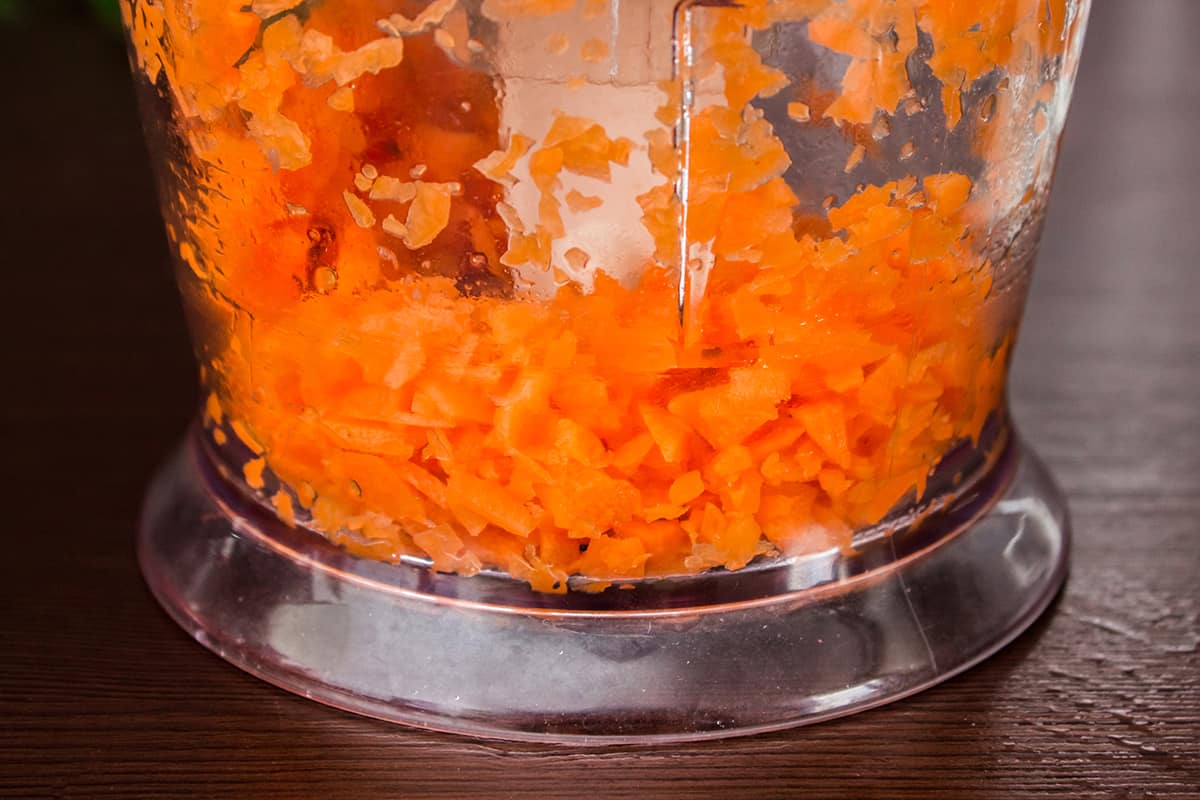
I know that blenders are used primarily for liquifying ingredients, but if you’re in a pinch or if you don’t want to spend half an hour julienning your carrots, then you can use a blender. Just make sure you utilize the pulse button and don’t leave the blender running for too long.
Hot to Use a Blender
- Peel the carrot with a vegetable peeler.
- Cut the carrot into one-inch chunks.
- Place two or three chunks into the blender.
- Pulse the carrot chunks in two-second increments until they’re as finely grated as you want them.
- Remember to scrape down the sides of the blender’s pitcher after every couple of pulses.
The thing about using a blender to grate carrots is that it doesn’t create uniform-size chunks. Some parts of the carrot might be considerably larger than the rest of the grated carrot. Also, if you blend the carrot for too long, you might end up with a carrot mash.
Julienne Peeler

A julienne peeler looks and works similarly to an ordinary vegetable peeler. The main difference is that it has a serrated blade that produces tiny ridges on your vegetables. If the serrated teeth are long enough, they can cut carrots into long strips.
How to Use a Julienne Peeler
- Peel the carrot using an ordinary vegetable peeler.
- Use the julienne peeler to peel the flesh of the carrot from the stem to the tapered end.
- Cut the julienned carrot strands to whatever length you want.
- If the teeth aren’t long enough to produce fine strips, julienne the carrot shavings.
Alternatively, you can use an ordinary vegetable peeler. However, you will have to finish cutting the carrot “sheets” with a chef’s knife.
Do I Need to Peel Carrots Before Grating Them?
No, you don’t. The main reason people peel carrots is to get rid of the debris clinging to the surface of the carrot.
Instead of peeling your carrots, you can wash them in your kitchen sink. Use a clean sponge or a brush to remove the surface debris from the carrot before setting them aside for further processing.
However, if you insist on peeling your carrots but don’t have a vegetable peeler, you can use a wire sponge or steel wool. Simply wash the carrots in your sink before rubbing its surface aggressively with a wire sponge. This will remove all of the surface debris and most of the peel.
Can I Store Grated Carrots in the Fridge?
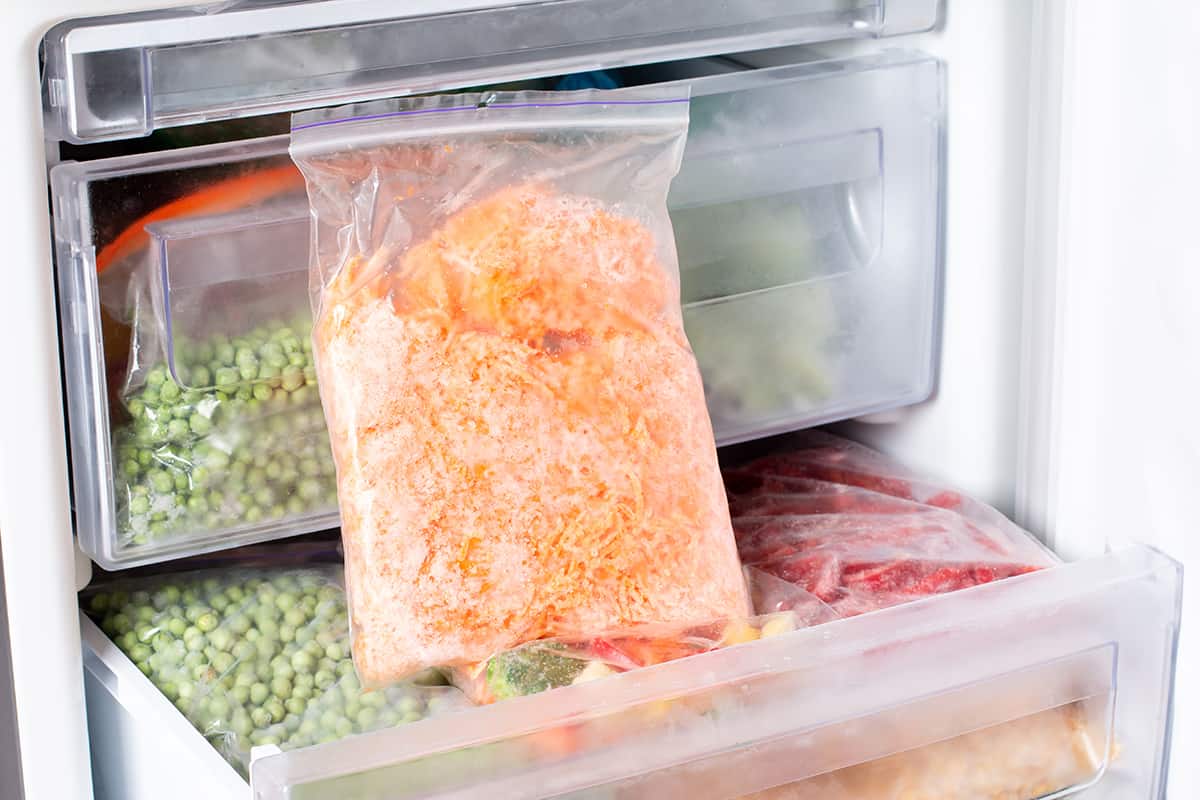
Yes, you can.
One of the best chef’s tricks you can try is preparing your ingredients beforehand. That way, you won’t have to mess around with peeling and grating your ingredients while trying to cook food at the same time.
To store grated carrots in the fridge, place the carrots inside a Ziploc bag and remove most of the air inside with a straw. You can also place a few teaspoons of water inside the bag to prevent the carrots from drying out and shrinking. Now, stick the bag inside your fridge. Chilled grated carrots have a maximum shelf life of about four days.
If you want your pre-grated carrots to last for over a week, stick them in a Ziploc bag, remove most of the air with a straw, and stick the bag in your freezer.
